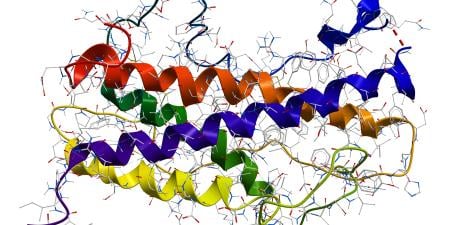Outram SM. Discourses of performance enhancement: can we separate performance enhancement from performance enhancing drug use? Perform Enhance Health. 2013;2(3):94-100.
The usefulness of a review article is a function of its comprehensiveness and the clarity of the framework the author uses to organize an extensive academic literature. Simon Outram’s article “Discourses of Performance Enhancement: Can We Separate Performance Enhancement from Performance Enhancing Drug Use?” is valuable in both respects [1]. Outram provides a typology of discourses about performance enhancement as a way of summarizing the key literature in this field. He focuses on four topics: (1) the meaning of the term “performance enhancement”; (2) performance enhancement as it relates to health; (3) the regulation of performance-enhancing drugs and technology; and (4) actual social practices regarding performance enhancement. As an orthogonal distinction to these four domains—that is, a distinction that cuts across all four—he differentiates between performance enhancement in sport and in cognition, using examples from one field to illustrate the other.
First, Outram notes that the term “performance enhancement” is often considered synonymous with the term “performance-enhancing drug” but that treating the two as equivalent ignores important insights from broader discourses about performance enhancement. For example, there is a long history of integrating performance-enhancing technologies into sport, in contrast to the strong regulatory approach to performance-enhancing drugs[2]. These technologies (such as altitude tents or advancements in bicycle alloys or ski design) may carry health risks as significant as those of certain performance-enhancing drugs, but the conversation around their use has centered not on safety but on questions of essentiality and authenticity. Advances in swimsuits—which are not essential to swimming (after all, a person is physically capable of swimming naked)—are seen as taking away the authenticity of a swimmer’s performance, whereas advances in ski design are not, given that skis are essential to that sport [3]. Thus, Outram argues, keeping the term “performance enhancement” ecumenical allows us to draw on insights from approaches to performance enhancement beyond performance-enhancing drugs.
Second, Outram focuses on the longstanding discourse about the relationship between performance enhancement and health. He notes the extensive philosophical work that has developed around distinguishing interventions that constitute treatment, which have the goal of making a person well or healthy, from those that constitute enhancement, which have the goal of making a person better than well [4]. Because this conceptual distinction has been so challenging to maintain, however, Outram correctly emphasizes the more recent debate on what constitutes a healthy athlete as opposed to a healthy person. Rather than thinking of health as the absence of disease, several authors have suggested that, in the athletic context, health should be thought of as the ability to achieve one’s reasonable goals [5]. On this definition, it could be argued that some performance-enhancing substances such as androgenic steroids actually promote the health of an athlete, especially if used in a controlled manner. Similarly, this conception of health may impact the way the physician-athlete relationship is conceived, particularly if the physician’s aim is to make the athlete—in contrast to the typical patient—healthy for competition [6].
Third, Outram reviews arguments about the regulation of performance-enhancing substances in sport. He notes that current regulations often turn on whether a particular drug is an actual or potential health threat or violates the spirit of sport. With regard to the second question, several authors have argued that, rather than violating the spirit of sport, the use of performance-enhancing drugs is faithful to it [7]. For example, drugs like erythropoietin—a red-blood-cell-stimulating compound—may offer athletes the ability to train harder and recover faster, leading to athletic excellence and achievement. This position, unsurprisingly, is associated with arguments to deregulate performance-enhancing substances. Outram also discusses “third-way” or harm-reduction models of regulation, whereby the permissibility of using a particular substance is contingent on the health state of a particular athlete [8]. Finally, he emphasizes the limits of our knowledge about whether certain regulated substances actually improve performance, although the regulatory implications of this epistemic deficiency are not clear.
Fourth, Outram reviews the distinction between social values and actual social practices regarding performance enhancement. He notes that surveys consistently demonstrate strong public opposition to performance-enhancing drugs in sport and cognition. This reflects, he suggests, a broad commitment to the value of unenhanced achievement. At the same time, however, there has been little change in public support for sporting activities such as Major League Baseball or the Tour de France after revelations of widespread use of performance-enhancing drugs. And there is also widespread use of potentially performance-enhancing supplements in the nonprofessional sports context. Noting these trends, some authors argue that the public tacitly accepts the use of performance enhancement despite expressing censure for it [9]. Over time, they suggest, our lived values may replace our more theoretical opposition to performance enhancement in sport and in cognition.
By way of closing comments: first, although Outram’s typology provides a helpful way of organizing the literature on performance enhancement, in practice these conversations are deeply interconnected, and his framework can create artificial divisions. For example, the treatment-enhancement distinction is often thought to map directly onto the permissibility of using a drug or technology and its regulation. Treatments are permissible; enhancements impermissible and hence regulatable. Similarly, conversations about authenticity lead directly to conversations about regulation, as with policies banning buoyant swimsuits. In general, the answer an author gives in one discourse about performance enhancement often directly impacts his or her position in another discourse, which can be obscured by treating them as separate conversations.
In addition, Outram follows the common practice of treating performance enhancement in sport and in cognition as separate conversations, related only in the way that they rely on similar distinctions or can inform complex cases in each domain. This approach reinforces the perception that performance enhancement in sport is only about physical accomplishments (e.g., stronger, faster, higher) and cognitive enhancements are only for academic accomplishments. Questions about the moral and regulatory status of cognitive enhancement—for example, the use of amphetamine salts among coaches or among athletes mastering playbooks—are just as relevant in sport and should be directly considered in that context as well.
References
-
Outram SM. Discourses of performance enhancement: can we separate performance enhancement from performance enhancing drug use? Perform Enhance Health. 2013;2(3):94-100.
- Miah A. Rethinking enhancement in sport. Ann NY Acad Sci. 2006;1093(1):301-320.
- Partridge B. Fairness and performance-enhancing swimsuits at the 2009 swimming world championships: the ‘asterisk’ championships. Sport Ethics Philos. 2011;5(1):63-74.
- Daniels N. Normal functioning and the treatment-enhancement distinction. Camb Q Healthc Ethics. 2000;9(3):309-322.
-
Møller V. The anti-doping campaign—farewell to the ideals of modernity? In: Møller V, Hoberman J, eds. Doping and Public Policy.Odense, Denmark: University of Southern Denmark Press; 2005:149-159.
- Miah A. Genetics, bioethics and sport. Sport Ethics Philos. 2007;1(2):146-158.
- Savulescu J, Foddy B, Clayton M. Why we should allow performance enhancing drugs in sport. Br J Sports Med. 2004;38(6):666-670.
-
Waddington I. Sport, Health and Drugs: A Critical Sociological Perspective. London: Routledge Press; 2000.
- Morgan WJ. Athletic perfection, performance-enhancing drugs, and the treatment-enhancement distinction. J Philos Sport. 2009;36(2):162-181.



